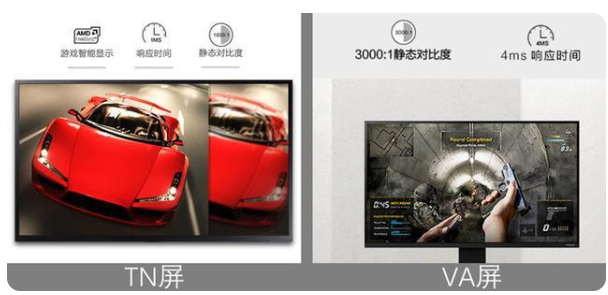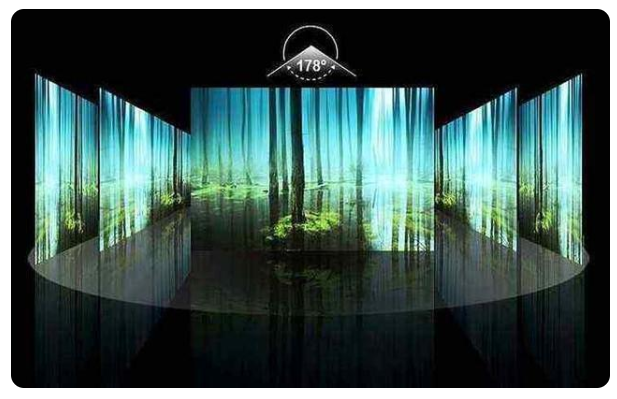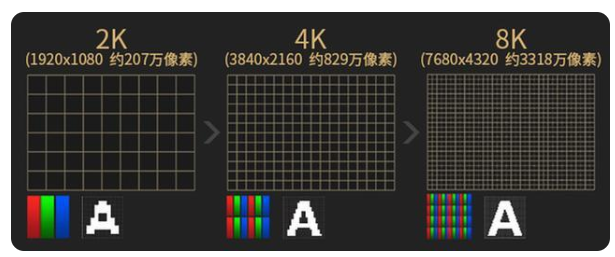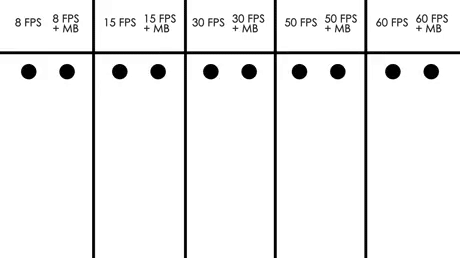What is the difference between TN, VA and IPS screens? The most basic display selection method
As more high-quality content can meet us through the Internet, everyone's attention to the quality of the screen is also increasing. The display screen is our interactive window with the "world". If you want to use Shuxin, you must first understand the difference between them and your own usage scenarios.It turns out that buying a monitor for a computer only cares about the brand and size. After careful understanding, I found that there are actually quite a few doorways here. Like LCD and OLED screens similar to mobile phone screens, the common panels of computer monitors are divided into three categories: IPS, VA, and TN. Resolutions that have certain requirements for performance range from 1080p to 4K. For competitive game players, in addition to the expressiveness of the screen, the refresh rate of the screen is also very important.

IPS, VA, TN screens with their own advantages and disadvantages
TN screen: fast response, a good choice for gaming and e-sports
The advantage of the TN screen is the extremely short response time and the fast deflection speed of the liquid crystal molecules. The current screen response time generally refers to the "grayscale response time", which represents how long it takes for the display pixels to display different brightness and color after the host inputs a signal to the display. The shorter the response time, the better, too long will cause smear on the screen. Ordinary displays generally exceed 5ms. The general response time of the TN screen is 1ms, which shows that it is suitable for use by e-sports players who compete for milliseconds.
The shortcomings are of course also obvious. The small viewing angle is one of them, and the screen color will be slightly whitish. The display color performance is the worst of the three. For the small viewing angle of the screen, you can refer to the old-fashioned monitors a few years ago, which is the feeling that the color of the screen will change when the tilt angle of the sitting posture is changed.

TN and VA screens have advantages in response time and contrast
VA screen: high contrast, more pure black
The VA screen also has a wide range of viewing angles, but it is still slightly worse than the IPS screen. The picture performance is softer in comparison. Because of the advantage of higher contrast, it will be more pure when displaying black scenes. The disadvantage is that the response speed is relatively slow and the power consumption is relatively higher.
Advantages: How to distinguish IPS screens from the above three types of screens? The screen hardness of IPS is higher than that of the other two. The easiest way is to gently press the screen with your fingers. The IPS screen is more difficult to change color. The theoretical viewing angle is as high as 178°, which is a feature of IPS. Even if the viewing angle is wide, the screen will not appear white or discolored even when viewing the content diagonally. For the IPS screen with wide viewing angle and higher color performance, it is more suitable for video and image processing workers than the other two.

The rankings of the three screens at ordinary prices are
Color and color standard: IPS > VA > TN
Response time: TN > IPS > VA
Viewing angle: IPS > VA > TN
Contrast ratio: VA > IPS > TN
Resolution:
Display resolution is a common topic. It represents how many pixels can display colors in one size, and countless pixels are lit at the same time to form the picture we see. Take our common mobile phone as an example. The original 4-inch 720p resolution screen has 1280 pixels in the vertical direction and 720 effective pixels in the horizontal direction. As the screen size of mobile phones has increased gradually to 1080p, 2K (2560 vertical, 1440 horizontal) resolution has even become standard in the 6-inch flagship machine.

Different resolutions of the same size display
Going back to the display, smaller displays are generally around 21 inches, and larger displays of 27 or even 31 inches have become the mainstream configuration. If such a large screen uses the same number of pixels as a 6-inch mobile phone, it will be enlarged. The icons and pictures must be clear mosaics. Therefore, when choosing a large-size monitor, it is also very important to choose a monitor with a high resolution.
Understand the pros and cons of the various panels of the display, the display refresh rate is also very related to the user experience. Usually our monitor has a refresh rate of 60Hz, which means that the monitor will play up to 60 pictures per second. The limit frame rate that the human eye can recognize varies from person to person. High refresh rate monitors like the flagship e-sports banner already support 144Hz or even 220Hz refresh rate. Its advantage is that it allows players to play games and browse content more smoothly, per second. More feedback on the screen is also the key to a decisive victory for the e-sports players. The importance of frame rate can be felt through the figure below.

High refresh rate is no longer synonymous with professional displays, although most of the mobile phones we currently use use the 60Hz refresh rate standard. But with the release of flagship phones that support high refresh rates such as OnePlus 7Pro and ROG Phone 2, 90Hz or even 120Hz has become the new industry standard. For the high refresh rate, this year's new iPhone seems to be worth looking forward to.
I believe everyone has a clear understanding of the three display panels. In general, the TN screen has the best response time at the ordinary price, and it is easier to buy a product with a high refresh rate at a relatively low price. Although the VA screen has been able to control the response time within the range that can meet normal use, the IPS screen is the first choice of ordinary users. It can not only meet the needs of color and display effect, but also in the static display effect and response time. It can also achieve a better balance.
Topland Electronics (H.K) Co., Limited
Tel:+86-0755-26487325
Fax:+86-0755-26487326
E-Mail:info@topland.com.hk
About TOPLAND
TOPLAND is committed to be a work leader of intergrated products and solutions of photoelectric display. Through the technical precipitation of backlight, touch screen and LCD products, we have the ability to provide customers with a complete set of technical solutions and services in the industry, and provide interface support for the interconnection of all things in the future.

Topland Electronics (H.K) Co. Ltd
Topland Electronics (H.K) Co. Ltd All rights reserved 粤ICP备11098054号
By continuing to use the site,you agree to the use of cookies.Read MoreACCEPT






